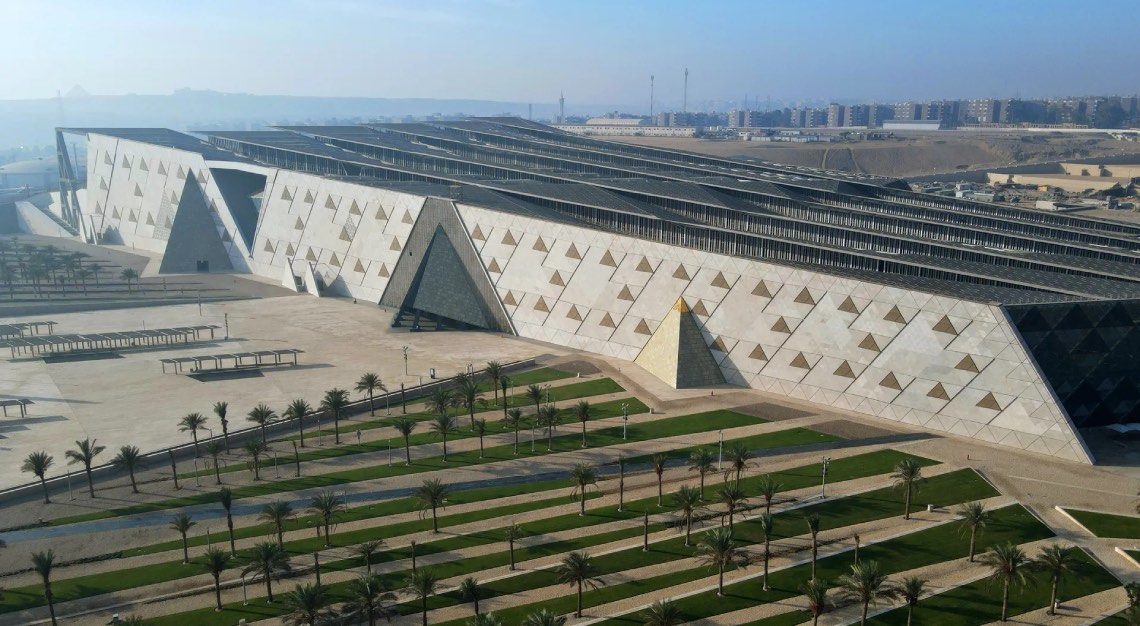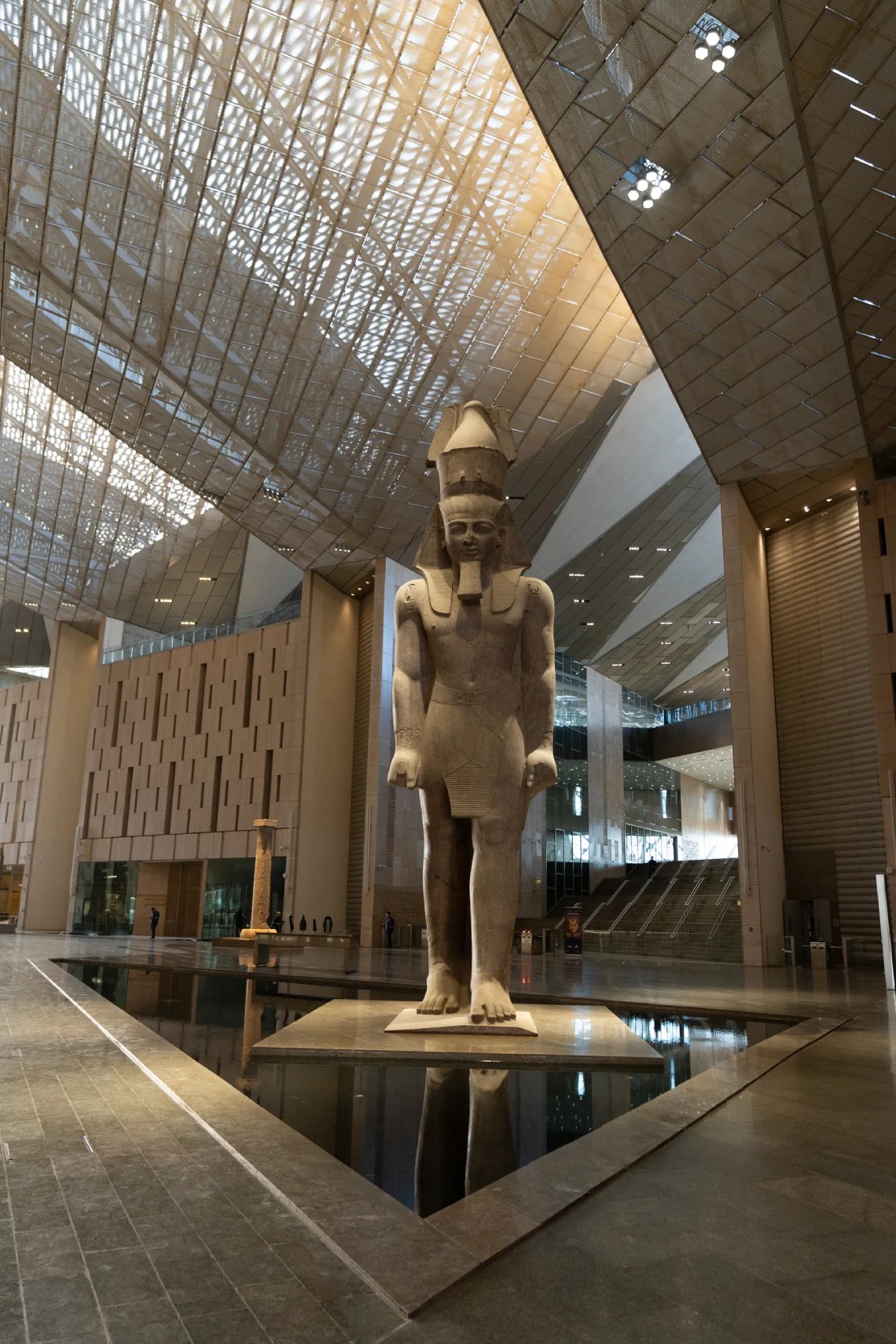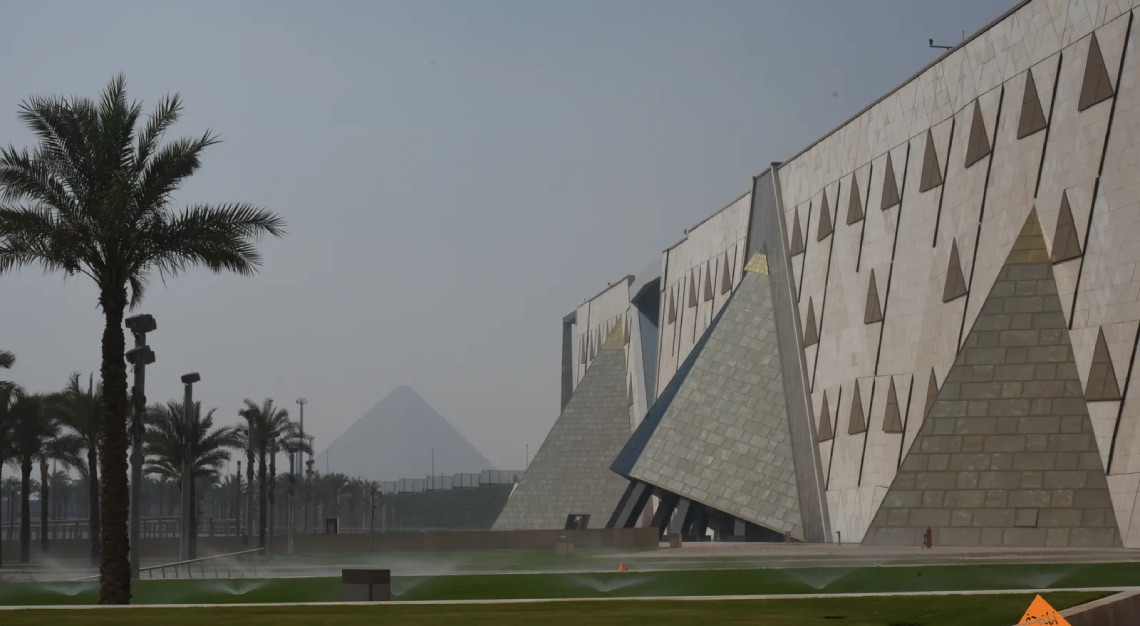The Grand Egyptian Museum provides a home for some 100,000 artefacts and 4,500 funerary objects
After approximately two decades, the Grand Egyptian Museum has finally been completed. Opened to the public since 1 November 2025, the museum is located in just two kilometres from the Pyramids of Giza, serving to strengthen the connection to history and place.
The US$1.2 billion project, which originated from an international architecture competition in 2003, is the work of the Dublin-based Heneghan Peng Architects, who envisioned their design as a bridge between ancient history and modern innovation.

The building’s layout aligns precisely with the Great Pyramid of Khufu and the Pyramid of Menkaure, while the exterior is covered in hieroglyphs and triangular pieces of translucent alabaster. At the heart of it lies a six-story staircase that leads you chronologically through Egypt’s history, before the journey culminates at the top floor, where the Tutankhamun Gallery opens out to a panoramic view of the Pyramids of Giza—located just two kilometres away.

Obviously, the museum serves to strengthen the connection to history and place. It provides a home for some 100,000 artefacts, including some never-before-seen relics and 4,500 funerary objects, gathered from all around the country. Packed into 12 exhibition galleries, they span over 5,000 years of Egyptian antiquity, taking you from pre-dynastic times to the Greco-Roman era. When you’re done exploring the inside, wander out to the gardens, where landscape architects West 8 have modelled them after the beautiful Nile Valley.
Apart from being a world-class exhibition space, the Grand Egyptian Museum will also feature one of the largest conservation and research facilities in the world, where 17 specialised labs are installed to safeguard Egypt’s heritage. This includes pottery, fragile papyri and even human remains.
Featured photo by Grand Egyptian Museum
